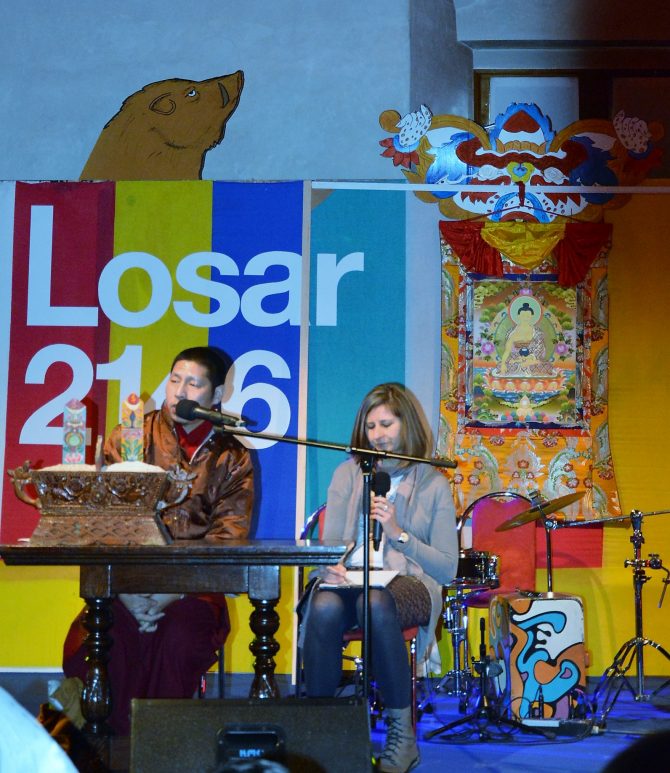Hepatitis A – Essential Information to Help You Protect Yourself
The Prague Public Health Authority is informing the public about key measures to protect against…
More

Text: Tereza Puldová
Photo: Alena Aichlmanová
The 14th year of the celebrations of Losar, the Tibetan New Year, took place in the historical premises of the New Town Hall in Prague on Saturday 9th February. According to the traditional Tibetan calendar, this year is the year of 2146. As for the zodiac sign, it is a year of the boar.
Losar is the most important holiday of the year not only in Tibet but also in Nepal, Bhutan, and in Tibetan communities living all over the world. In Tibet it was celebrated even before the establishment of Buddhism. The traditional faith which is characteristic of respect to natural elements, local spirits and protectors, still remains strong in Tibet. The Tibetans make smoke offerings for them, they perform cleansing rituals, and hang out new prayer flags. These celebrations were adopted into the Buddhist religion only later. In monasteries they perform a special New Year ritual called puja. Originally, the Losar celebrations took 15 days or more. In India they celebrate it for 3 days and in other countries usually for one day. In Prague, the Tibetan New Year has been publicly celebrated since 2003.
Various Buddhist groups and NGOs associated with the Tibetan culture have been volunteering to organise this Prague multicultural festival. This year, the Buddhist meditation group Samten Tse became the main organiser. The growing Tibetan community in Czech also took part in the organisation of the event. This aspect of communality makes Losar in Prague an unique event. People who are interested in Tibetan Buddhism had another great opportunity to learn about its various forms and schools. Apart from that, there was a varied cultural programme for the wider public including families with children. The festival is open to the non-Buddhist public and the celebrations are extensive, which makes the Prague event unique in the whole of Europe.
The programme was opened by a traditional New Year ritual with a prayer and an astrological prediction for the upcoming year. A special guest of the festival was the Dunjingarav group which plays traditional Mongolian music. They even prepared a surprise – a performance of a snake dancer. During the day, the visitors could come to various lectures, workshops, meditation exercises, music and dance performances, and art workshops. At his lecture, Petr Zach explained how brain works and what can be done to deal with stress. He also talked about herbal recipes of traditional Tibetan medicine and the popular mindfulness meditation. A lot of people were interested in a yantrayouga workshop and a workshop of Tibetan dances khaita. A series of spiritual films about Tibet were screened at the cinema auditorium.
The visitors could also try traditional Tibetan and Nepalese food. There were for example momos – Tibetan dumplings, and the Indian masala tea with spices and milk. On the ground floor, there was a market where the visitors could buy various decorations, clothes, incense sticks, thematic literature, and CDs. The stands presenting organisations which help Tibet offered information about their projects and how people can support them.
A lot of the art workshops were prepared for children together with a special programme in a children’s corner. Children could also try out the Kumar Kumari yantrayoga – traditional Tibetan yoga for children.
The festival helps spread information about Tibetan Buddhism but it is also a charitable event. The proceeds from the festival are used to support humanitarian and development projects of A.S.I.A. Onlus, an international non-profit organisation which provides help in Tibet and other areas. A.S.I.A. Onlus has been working since 1988 and it strives to preserve the traditional culture of ethnic minorities in Tibet, China, Mongolia, India, and Nepal. They support the inhabitants of Tibet in the form of development projects which include the construction of hospitals, schools, irrigation and water supply systems. The organisation also collects funds to provide education to the poorest Tibetan children and refugees in the form of a distance adoption.
The traditionally high attendance of the Prague celebrations of Losar at the New Town Hall shows that the Tibetan culture is close to the Czech public and that the Buddhist legacy of Tibet provides a significant enrichment for today’s people.
The Prague Public Health Authority is informing the public about key measures to protect against…
Morephoto: ICP’s Facebook page On Monday 8th December, the Integration Centre Prague is opening registration…
MoreThe Prague Public Health Authority is informing the public about key measures to protect against…
Morephoto: ICP’s Facebook page On Monday 8th December, the Integration Centre Prague is opening registration…
More